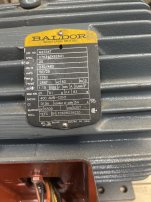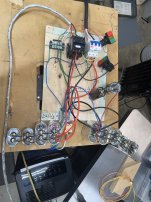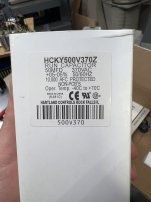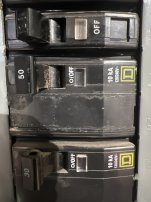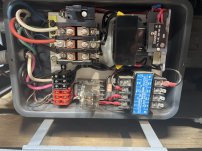dmartin.dlm
Plastic
- Joined
- Dec 6, 2022
Hey everyone.
I’m building a 20hp RPC. My idler motor is a relatively new Baldor
20hp V:230/460 Amps: 50-25. RPM: 1760
3-phase motor. Service Factor: 1.15
NEMA Nom.EFF. 91% PF: 83%
This is most of the information on the motor and I’ll add a photos.
I have a a latching circuit for a 3-phase contactor and a momentary switch to 1,030MFD START capacitor to start the 20hp idler. And I’m using run capacitors between the incoming 240v and the Ghost leg.
Here’s the problem… I’ve got the idler motor up and running and I’ve got the legs pretty well balanced and these are my numbers
L1 to L2= 243Volts.
L1 to Ghost leg(L3)=264Volts
L2 to Ghost leg(L3)=263Volts
And Amps 5.5 on both L1 &L2
***but I’m new to this stuff and I’m not sure if I’m reading it correctly… I have an Clamp meter using the setting 400/600 AC A or
40 AC A.
Also the power is coming from a 50amp break and I believe I have a 200amp panel.
The wire I’m using 10gauge 600v rated wire.
**** I was thinking 1 of the issues might be that I’m using 370VAC Run capacitors instead of the 400-plus ones. (I couldn’t remember the exact Volt those higher ones were)
All the wire to and from the contactor and the machine I want to power is 10gauge 600Volt wire except for the wire to from capacitor to capacitor and the latching and start switch.
I can the Machine I want to power is a 10hp 25” wood planer 3-phase 220/440v 60hz motor.
The RPC will start the planer but pop the 50amp breaker before it gets up to speed.
So I’m wondering if y’all can help me figure out what or where I may have gone wrong ?
And if there’s any ideas of how I can fix it.
Also I’m not sure what some of the idler motor information means. Like: the service factor, the EFF. , which I’m assuming is efficiency, and P.F. 83% and what/if they play a role in what the RPC can power up.
Oh and my RPC is currently laid out on a piece of plywood and MDF but I will be putting it in an electrical box when it’s done and working properly.
Thanks for any advice and suggestions!!!!
I’m building a 20hp RPC. My idler motor is a relatively new Baldor
20hp V:230/460 Amps: 50-25. RPM: 1760
3-phase motor. Service Factor: 1.15
NEMA Nom.EFF. 91% PF: 83%
This is most of the information on the motor and I’ll add a photos.
I have a a latching circuit for a 3-phase contactor and a momentary switch to 1,030MFD START capacitor to start the 20hp idler. And I’m using run capacitors between the incoming 240v and the Ghost leg.
Here’s the problem… I’ve got the idler motor up and running and I’ve got the legs pretty well balanced and these are my numbers
L1 to L2= 243Volts.
L1 to Ghost leg(L3)=264Volts
L2 to Ghost leg(L3)=263Volts
And Amps 5.5 on both L1 &L2
***but I’m new to this stuff and I’m not sure if I’m reading it correctly… I have an Clamp meter using the setting 400/600 AC A or
40 AC A.
Also the power is coming from a 50amp break and I believe I have a 200amp panel.
The wire I’m using 10gauge 600v rated wire.
**** I was thinking 1 of the issues might be that I’m using 370VAC Run capacitors instead of the 400-plus ones. (I couldn’t remember the exact Volt those higher ones were)
All the wire to and from the contactor and the machine I want to power is 10gauge 600Volt wire except for the wire to from capacitor to capacitor and the latching and start switch.
I can the Machine I want to power is a 10hp 25” wood planer 3-phase 220/440v 60hz motor.
The RPC will start the planer but pop the 50amp breaker before it gets up to speed.
So I’m wondering if y’all can help me figure out what or where I may have gone wrong ?
And if there’s any ideas of how I can fix it.
Also I’m not sure what some of the idler motor information means. Like: the service factor, the EFF. , which I’m assuming is efficiency, and P.F. 83% and what/if they play a role in what the RPC can power up.
Oh and my RPC is currently laid out on a piece of plywood and MDF but I will be putting it in an electrical box when it’s done and working properly.
Thanks for any advice and suggestions!!!!


